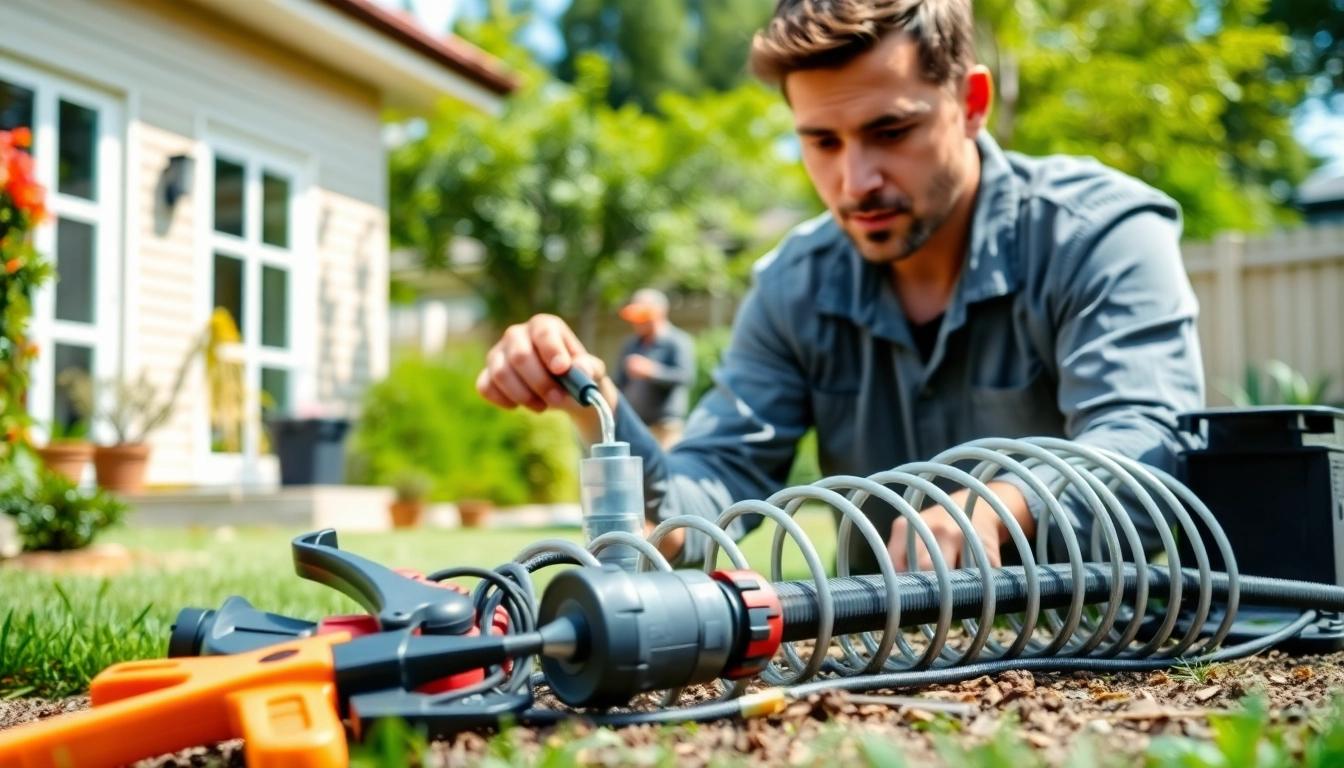What is a Termite Reticulation System?
Definition and Purpose of Termite Reticulation Systems
A termite reticulation system is a specialized pest control mechanism designed to effectively protect a building from termite infestations. This system comprises a network of underground pipes connected to a central reservoir of liquid pesticide that is strategically installed around the perimeter of a property. Its primary purpose is to create a barrier that becomes the first line of defense against termites seeking to enter. Over time, the chemicals in the system can deplete, making it essential to schedule regular termite reticulation system refills to maintain optimal protection.
Components of a Termite Reticulation System
Understanding the components of a termite reticulation system is fundamental to appreciating its operational efficiency. Here are the key components:
- Pipelines: Durable pipes installed underground, these are crucial for transporting the pesticide to designated areas.
- Access points: These entries allow pest control technicians easy access for maintenance and refilling of the chemical solution.
- Pesticide reservoir: This central storage holds the liquid pesticide, which is released at intervals to protect the premises.
- Monitoring systems: Some installations may include monitoring devices to gauge the effectiveness of the chemical barrier.
Benefits of Installing a Termite Reticulation System
Investing in a termite reticulation system offers several benefits, including:
- Continuous Protection: Provides ongoing protective measures against termite infestations.
- Cost-Effectiveness: Prevents severe damage over time that can be costly to repair.
- Minimal Disruption: Unlike traditional pest control methods, reticulation systems cause less disruption to your property.
- Accessibility: Easier for pest control professionals to maintain and refill compared to other termite treatment options.
Understanding the Need for Refills
Why Regular Refills are Critical for Protection
Termite reticulation systems rely on liquid pesticides that degrade over time. Various factors, including soil composition, climate, and type of chemical used, influence how quickly the active ingredients diminish. Regular refills ensure that the chemical barrier remains effective and that your property remains protected. Allowing these chemicals to deplete can lead to vulnerabilities that termites may exploit.
How Often Should You Refill Your System?
Most experts recommend refilling your termite reticulation system every three to five years. This timeframe can vary based on the specific chemicals used in your system, environmental conditions, and local regulations. Homeowners should also consider annual inspections to check for the efficacy of the system and determine whether a refill is needed sooner due to specific conditions.
Impact of Environmental Factors on Refill Schedule
Environmental factors play a significant role in the degradation of chemicals within a termite reticulation system. Heavy rainfall, soil type, and even vegetation growth around the property can contribute to the depletion of the chemical barrier. For instance, sandy soils may cause chemicals to leach away more quickly compared to clay soils, necessitating more frequent refills. Homeowners should work with pest control professionals to assess these variables and adjust their refill schedules accordingly.
The Termite Reticulation System Refill Process
Step-by-Step Guide to Refilling Systems
Refilling a termite reticulation system involves several systematic steps:
- Inspection: A thorough inspection of the system should be conducted to identify any leaks or damages.
- Access Point Location: Locate the access points for injecting the new chemical solution.
- Drain Eventual Residue: Depending on the system setup, you may need to drain any residue from previous treatments.
- Inject New Chemical: Use specialized equipment to inject the appropriate pesticide into the system.
- Seal and Test: After the refill, ensure that all access points are sealed and that the system is functioning correctly.
Tools and Materials Needed for Refills
The tools required for refilling a termite reticulation system generally include:
- A specialized chemical pump for accurate measurement and injection
- Protective gear including gloves and goggles
- A flathead screwdriver for access point manipulation
- Portable containment for any residual pesticides
Professional vs. DIY Refilling: What You Need to Know
While some homeowners may consider a DIY approach to refilling their termite reticulation systems, it is essential to weigh the pros and cons. Professionals are trained to evaluate the system’s condition and apply the correct chemicals safely and effectively. They have access to high-quality chemicals and equipment, ensuring that the refill is conducted efficiently. A DIY approach may save costs upfront but could lead to unreliable results or safety risks. Therefore, homeowners should carefully consider their capabilities and the importance of an effective refill before proceeding with a DIY approach.
Costs Associated with Termite Reticulation System Refills
Understanding the Pricing Structure
The cost of refilling a termite reticulation system can vary widely based on various factors such as the size of the property, the type of chemicals used, and the complexity of the system. Typically, homeowners can expect to pay between $200 to $700 for a refill, but it is advisable to obtain quotes from multiple pest control professionals to ensure a competitive price.
Long-Range Financial Benefits of Regular Refills
While the initial costs of refills may seem high, consistent refilling offers significant long-term financial benefits. Preventing termite infestations can save homeowners thousands in potential repairs and structural damage. Additionally, maintaining a properly functioning reticulation system can extend its service life and reduce the need for more expensive treatments or complete system replacements.
Comparing Costs: DIY Refills vs. Professional Services
When deciding between DIY refills and hiring a professional, it’s crucial to compare not only the upfront costs but also the long-term implications. DIY refills may save immediate expenses, but if done incorrectly, can lead to inadequate protection and higher costs down the line. In contrast, professional services may introduce initial costs but typically guarantee safety and reliability, ensuring that your termite defense is maintained at peak effectiveness.
Choosing the Right Pest Control Service
What to Look for in a Pest Control Company
Not all pest control companies are created equal, so homeowners should conduct comprehensive research when selecting a provider for their termite reticulation system. Some key considerations include:
- Experience: Look for companies with extensive experience in termite control and reticulation systems.
- Certifications: Ensure that the company employs certified and trained pest control technicians.
- Insurance: Reputable companies should have liability insurance and workman’s compensation.
- Service Guarantee: A guarantee that covers follow-up services if termite issues arise after refills or initial treatments.
Questions to Ask About Their Reticulation Services
When interviewing potential pest control companies, consider asking the following questions:
- What chemicals do you use in your reticulation systems, and how do they compare to competitors?
- Can you provide references from customers who have used your reticulation services?
- What is included in your standard service agreement?
- How do you approach maintenance and refill scheduling?
Customer Reviews and Testimonials: Importance in Decision Making
Customer reviews and testimonials can offer incredible insight into the quality and reliability of a pest control company. Reviews on platforms like Google, Yelp, or specialized pest control forums can help you gauge the satisfaction rate of previous clients. A strong track record of positive feedback regarding timeliness, effectiveness, and professionalism in services is a good indicator of the company’s capability to manage your termite reticulation needs.



